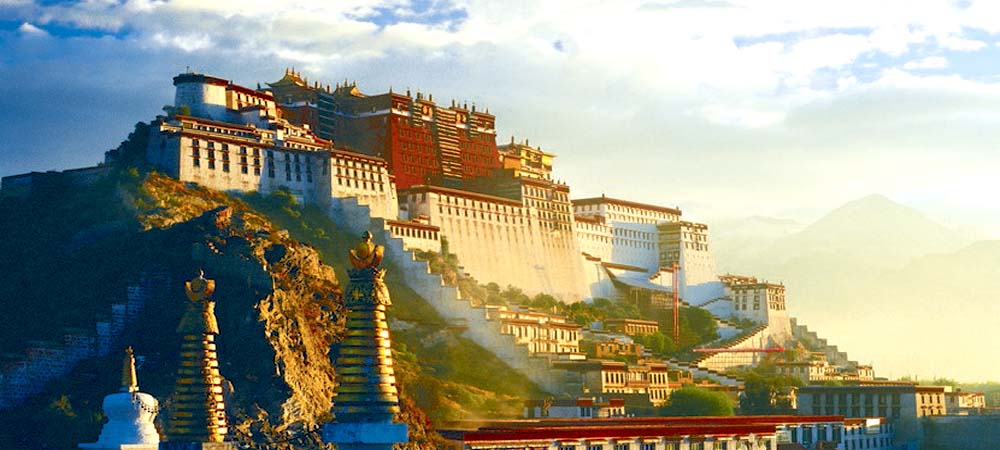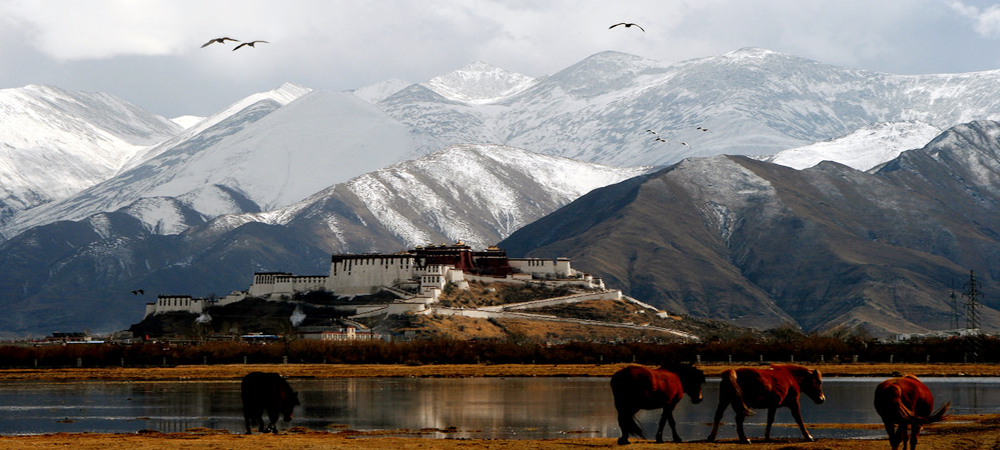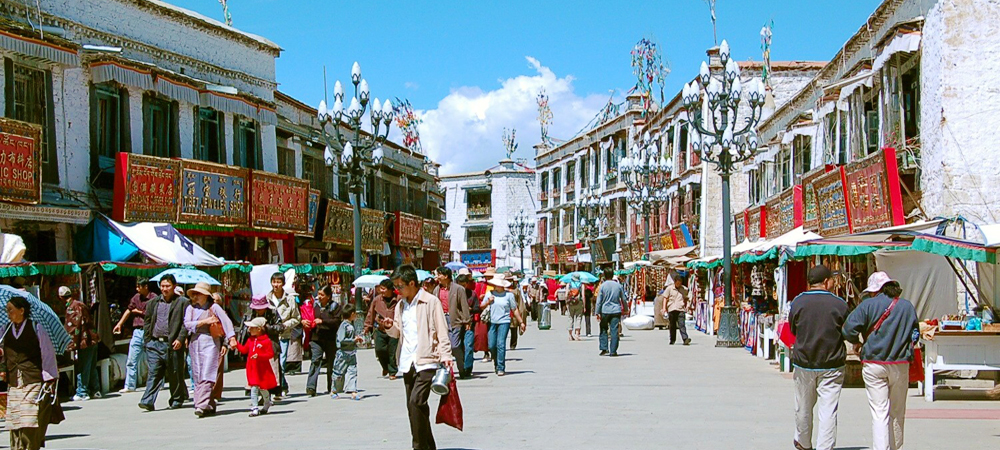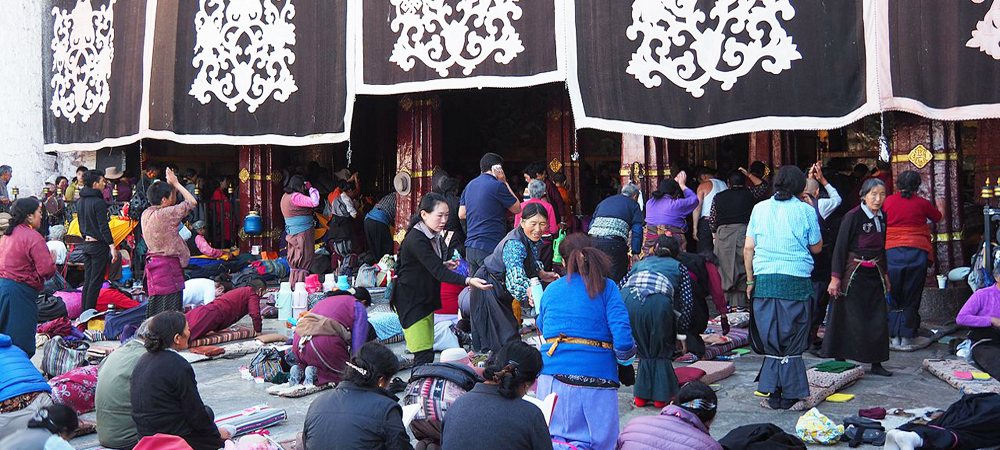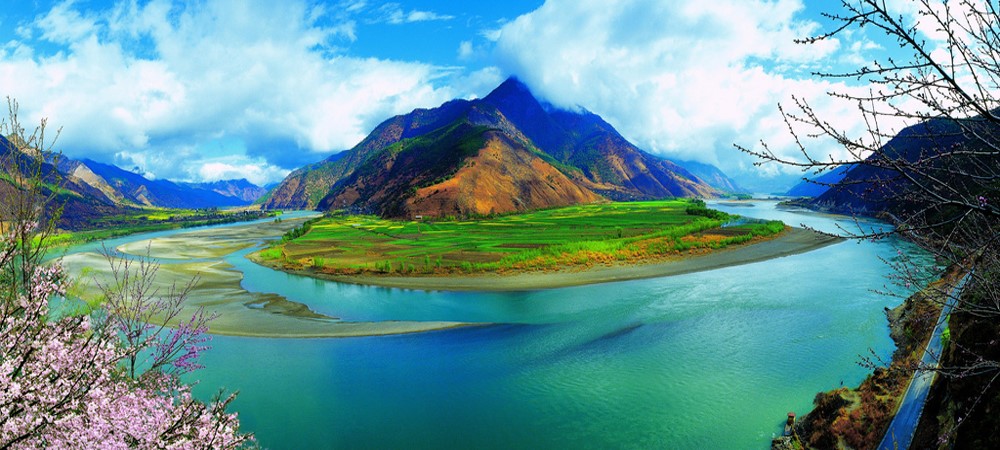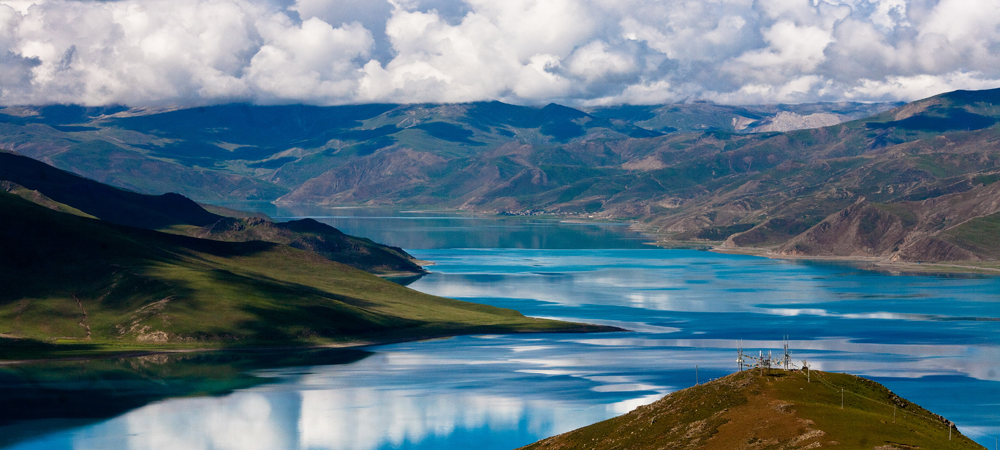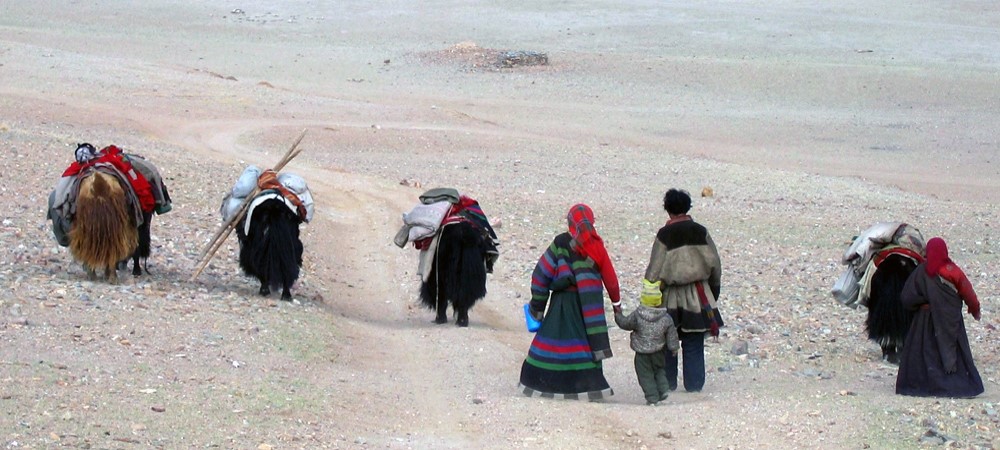Up until the late 1930’s, Tibet was a mythical land that no one was quite sure even existed!
Indeed, many Western explorers thought that the whispering of a land called ‘Tibet’ from Chinese and Indian traders at the time could well refer to the mythical kingdom of Shangri-La: A Utopian kingdom hidden somewhere within the Kunlun Mountains in the Chinese Himalayas.
In many ways – it turns out – they were not too far off the mark. When the first Westerners started to discover Tibet on great mountain expeditions post-WWII, they found a fascinating kingdom on the top of the world unlike anything else they’d ever seen. With the Chinese annexation of Tibet in the 1950’s, Tibet had finally opened up to the world and lost its isolation. The annexation remains controversial to this day, but after a period where Tibet suffered religious persecution and cultural degradation, today Tibet is an official ‘Autonomous Region’ of China, where religious and cultural freedom is being respected and rebuilt, and Tibet’s original fascinating character has been restored.
1. The Potala Palace
Probably the most iconic landmark in all of Tibet, the Potala Palace is synonymous with the capital city of Lhasa and indeed of all of Tibet.
The Potala Palace towers above the city as a stronghold built some when in the 7th Century AD, and the Fifth Dalai Lama rebuilt it over 3 years, while the Thirteenth Dalai Lama restored and refurbished it into what you see today.
Since 1755, Potala was firmly associated with the Dalai Lamas when it became the winter palace ever since. With its 1000 rooms, it became the religious and political power base of Tibet over the centuries until the current Dalai Lama fled and went into exile in India, where he has remained ’til today.
Nevertheless, this UNESCO World Heritage Site houses numerous rare cultural and religious relics, such as gold hand written Buddhist scriptures, great gifts from Chinese Emperors and priceless antiques aplenty.
Allow plenty of time to climb the many steps leading up to the Palace: It is a staggering 14 stories tall and a visit inevitably involves a tough – but well worthwhile – clamber to the top.
2. Barkhor Street Market
This circular street around the Jokhang Temple (mentioned below) is in the heart and centre of of the oldest part of Lhasa. It’s in a very traditional part of the city, with the architecture still in the ancient Traditional Tibetan style.
While you can enjoy some gentle bargaining with the Tibetan vendors here selling all sorts of handicrafts perfect for souvenirs – some you will not be able to find anywhere else in the world – the real joy of the market is the fact that it’s still one of the most important religious paths for pilgrims who are walking to Jokhang Temple. There are prayer wheels being turned by the pilgrims, as there have been for centuries. Buddhist pilgrims either walk or the more devout prostrate their way in body lengths along the street clockwise every single day of the year, every single night.
All in all it feels a bit like being lost in some sort of surreal Indiana Jones movie!
3. Jokhang Temple
Constructed in the same century as Potala Palace in the 7th century AD, Jokhang Temple is another must-see in Lhasa.
Its most sacred occupants are undoubtedly the gifts of Buddha statues that the princess of Nepal and Wen Cheng from the Tang Dynasty in China bought for their future husband, King Songtsan Gampo. The temple has been enlarged and restored many times over the centuries and now houses statues of King Songtsan Gambo and his two famous foreign brides, the subjects for what the temple was originally built.
However, the most sacred without a doubt is the original statue of Sakyamuni Buddha that Princess Wen Cheng brought from Chang’an over 1300 years ago. In fact, it is probably the most worshiped religious artifact in all of Tibet to this day and is utterly sacred.
Aside from the glorious artifacts found within the temple, the temple construction itself is a marvel to behold in its own right. It is a four-floor building facing west towards the sunset with a guilder rooftop, and as previously mentioned, is located on Barkhor Square right in the heart of old Lhasa.
4. Yarlung Tsangpo Grand Canyon
So you thought Tibet was all about Buddhist spirituality and freezing mountain peaks? Well, you’d be wrong. Few people would ever expect that Tibet is home to the longest, deepest and highest grand canyon in the entire world.
One of the most beautiful parts of the 500km canyon is where it bends around Mount Namcha Barwa – standing at a dramatic 7782 metres high – where it then cuts its way through the Eastern Himalayan range. Here we see Tibet green and lush, rather than at its usual bleak high altitude moonscape.
But as the canyon passes between the peaks of Namcha Barwa and Gyala Peri, it reaches an average depth of a mind blowing 5000 metres, while the very deepest depth in total reaches 6,009 metres – that is a 6km drop, and it completely blows the Grand Canyon completely out of the water!
You can visit this hidden natural wonder of the world from May to October, and one of the best ways to see it in all its glory has to be by trekking on foot: One huge bonus of trekking is that you’ll also get to see tribes here (called simply the “Ba”) that have been unaffected by the outside world when compared to other tribes across the world, and give you a unique taste of what Tibetan culture was like perhaps thousands of years even before the arrival of Buddhism.
This really is a hidden gem that will guarantee to delight: Just make sure you go before it appears well and truly on the tourist map.
5. Namsto Lake
Although not the highest lake in the world, Namsto is still well up there at 4730 metres above sea level. So you will need to be spend a few days gradually ascending and making sure you are acclimatised to the altitude before you can lay your eyes on what is quite literately one of the most beautiful spectacles in the world, let alone Tibet.
The lake is well over 70km long, with a width of 30km and generates its own waves with its almost constant high altitude winds flowing across the saltwater, visitors often report they feel it looks more like some sort of mystical, forgotten ocean, with the wishy washy blue of a high altitude sky to contrast its waters, and surrounded by snow capped mountains year-round.
Indeed, Tibetans have always considered this lake sacred and holy, such to the extent that they built Tashi Dor Monastery on one of the small islands on the lake in 1498AD, which they named ‘Nam’. This isolated Monastery is so scared that only 8 monks at any one time have dwelled there, lost in Buddhist practices and on a permanent retreat, and historically it is said that another Buddha has lived there teaching the monks, though its isolation and secrecy make it impossible to deny or confirm this remarkable claim. You can however, see Tashi Dor Monastery from the shores on a visit to the lake.
Another attraction, aside from the mysterious Monastery and otherworldly lake itself, is to see the Tibetan Nomadic people named ‘Drokpas’ or ‘Changpa’. The ‘Changpa’ are herders who migrate around the lake and up to the area in the vast northern plateau of Tibet known as Changtang. If you drive to the lake from Sok or Nagchu you may well get a chance to visit a Changpa camp, or if you are trekking you will almost certainly be able to stay a night or two living with them.
Again, this represents a magnificent opportunity to see a subculture very different from mainstream Tibetan itself, but also unique to the world as a whole.
Political controversy aside, Tibet still retains a truly unique culture despite being harshly forced to come out of their isolation in the 1950’s. And yet so much more remains to be discovered, whether it’s tribes, nomads, great canyons or their unique take on the Buddhist tradition, these are all awaiting those who yearn for adventures to find their own Shangri-la.
Recommend tours of Tibet & Yunnan Province:
- Tibet Highlights: 4-night Tour of Tibet featuring Lhasa, Potala Palace & More
- Yangtze & Tibet Explorient: Luxury Tibet & China Tour featuring the Yangtze River Cruise
- Spectacular Yunnan: Culturally inspiring tour of China’s Yunnan Province featuring Lijiang & Shangr-la
For additional travel packages of interest, be sure to check our extensive array of China & Tibet Tours & Vacation Packages.

